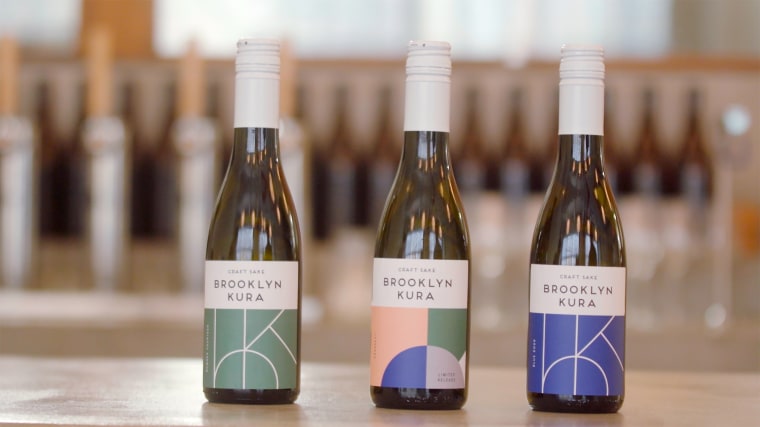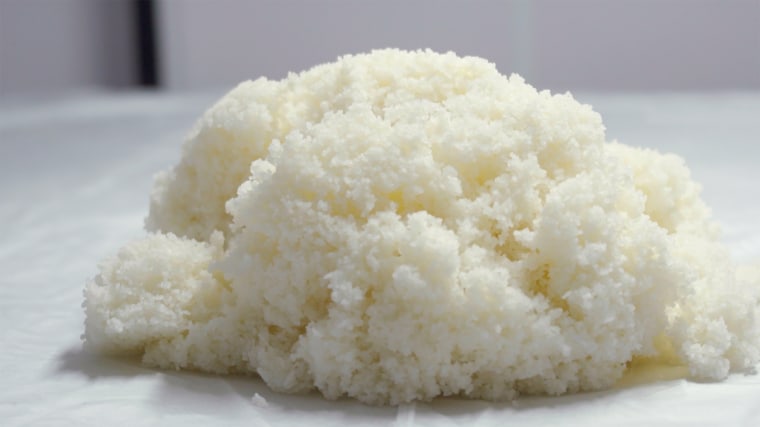Blue Hill, a farm-to-table restaurant in New York’s Greenwich Village, is known for serving local produce, cheese and beer. Now the restaurant has local sake, too, from Brooklyn Kura, a brewery that opened this year and is part of a wave of craft sake producers who are finding new homes for sake outside the world of sushi and ramen.
“Sake’s been trying to come to the U.S. for a long time,” said Brooklyn Kura co-founder Brian Polen, who left his finance job at American Express to found the brewery with head brewer Brandon Doughan. “I think restaurants, beer bars with hamburgers, and things like that — that’s how we’re going to introduce people to sake.”
American-made sake was long an industrial affair. Most of the breweries were created by Japanese companies during the country’s economic boom of the 1980s, which led to investments in the U.S. in all sorts of fields, including sake. The companies imported their Japanese-made premium sake, but used their new U.S. facilities to make cheap sake destined for sushi joints, where it might be served hot or dropped into a beer to make a “sake bomb.”

Today’s craft sake breweries have higher aspirations, both in terms of quality and the market. “Sake is ubiquitous, but in the corner sushi shop,” Polen said. “It’s about penetration of nontraditional places that are owned and managed by taste-makers who are excited about sake.”
Blue Hill uses Brooklyn Kura’s unpasteurized Number 14 sake as part of a nontraditional pairing with its menu and also sells it by the glass and infused with various vegetables.
“Brandon takes very meticulous steps to make sake at as a high a quality as they do in Japan,” said Jason Cho, Blue Hill’s wine director. “So even though you can say it’s not an authentic experience, it’s very authentic to Brooklyn and New York state.”
There are no official numbers on American sake producers because the federal government folds the data in with beer production. But Tim Sullivan, founder of UrbanSake.com, a sake information and review site, recently listed 20 sake breweries in the U.S. compiled through his own research, up from an estimated five in 2000. All but four are small craft brewers.
According to sake educator Toshio Ueno, total U.S. sake production went from 12.9 million liters in 2007 to 19.2 million liters in 2015, the most recent number available, a nearly 50 percent increase. The figures were published in 2017 by a Japanese academic publication, Sake-Shi Kenkyu, which focuses on historical research about sake, Ueno said.
In addition to Blue Hill, Brooklyn Kura’s sakes are also served at the John Dory Oyster Bar and the Lure Fishbar in Manhattan. Both focus on seafood, so they aren’t a big stretch from sushi restaurants. Gold Star Beer Counter, a craft beer bar in Brooklyn, also serves the sake alongside a selection of cheese, charcuterie and sandwiches.
Other craft sake breweries scattered across the country also reach beyond the Japanese food scene for their clientele. Boston’s Dovetail Sake can be found at the restaurant L’Espalier as well as in many craft beer bars in the city, and in Kittery, Maine, even the local 7-Eleven sells Blue Current sake.
The U.S.’s vibrant craft beer scene has emerged as a big supporter, as brewers and craft beer fans are realizing that the term “rice wine” is a misnomer. Sake is brewed, just like beer, though the fermentation process is different. With beer, the grains are malted, whereas sake relies on a mold spore called koji, which is also used in soy sauce and miso production.

While Brooklyn Kura focuses primarily on traditional sake styles, others are embracing the kinds of creativity and flavor profiles found in craft beers.
“We were inspired by Japanese sake, but we were not going to be bound by it,” said Adam Blumenshein, co-owner of Austin’s Texas Sake. Their lineup includes a sake aged with oak chips, an apple pie version for autumn and a sake spiked with cranberry and clove for the holidays. These are all techniques popular in today’s beer breweries — but beyond the pale, and generally the law, for Japanese sake brewers, who face strict regulations for what they can legally label as sake.
Craft sake producers are taking advantage of their local presence in other ways. Brooklyn Kura and Texas Sake both offer sake on draft, literally tapping into beer venues in a way that allows curious drinkers to taste the sake before committing to a glass or bottle. Brooklyn Kura makes all their sakes without pasteurization, which allows for a wider range of flavors, whereas most imported sakes are pasteurized twice during production. Local distribution means they can ensure it will be kept chilled and served properly to avoid spoiling the flavor.
Japanese sakes that don’t travel well, or need to reach the consumer quickly, such as un-aged shiboritate sakes, are even rarer in the U.S. Brooklyn Kura offers a couple of batches of shiboritate regularly in their taproom, along with the chance to taste moromi, the still-fermenting sake.
Some Japanese sake producers are excited by the new entrants to the market — they see American craft producers less as competition and more as an opportunity to accelerate American awareness of sake.
One Japanese sake brewery, Asahi Shuzo, known for the Dassai brand, is opening a premium brewery in the U.S., in partnership with the Culinary Institute of America, in New York’s Hudson Valley.
The company’s chairman, Kazuhiro Sakurai, says the Culinary Institute invited the brewery to complement the institute’s new Japanese food program, but he hopes students will take the opportunity to pair sake with the French, Italian and American dishes they’re learning to make as well.
“People’s impression of sake in the U.S.A. is still that it’s a drink served only in Japanese restaurants,” Sakurai said. “We believe we will be able to overcome such impressions, but to do that, it is necessary for us to step closer into American food culture.”
